As Albert Einstein once said ” Little knowledge is a dangerous thing. So is a lot”. These words seem to express my state of mind in the most emphatic manner.
And my inspiration to write today’s topic comes from the fact – How our Thoughts, sometimes clogged by limited perceptions, drive the way we Understand or Relate to THINGS which are Alien / Seems different to us OR Total opposite OF how we know the world around us. And that’s when, we start Drawing a picture of Understanding with the “Little Knowledge” we possess. And subsequently the “Little Knowledge” takes a shape, which sounds more realistic than the Original Fact and Hence it seems a distant idea to corroborate facts with the Picture of Understanding.
CAPTURING the same thought, let me Introduce you to the main protagonist, we know by the name – INDIA (My Country!!)
INDIA as also known by many other names “Hindustan /Bharat (Known in Hindi)”.
Metaphorically, some other names that people relate with India are –
- Land of Spirituality
- Land of Festivals
- Land of Diverse Religions
- Land of Mystery & Diversity….Like this you can find various ways People like to relate with India.
Apt is an Quotation from Mark Twain
But that’s not what I want to talk about today, I am more Interested in another Phrase – “Land of Snake Charmers” which kind of makes me profoundly Sad when people with clogged & limited perceptions relate India with just that!!!
To run against the Analogy, I needed to dwell back in our glorious past / present and put forward few facts to challenge !! Let’s get on with the Journey Then!!
Lets Start – Old Facts – Glorious India
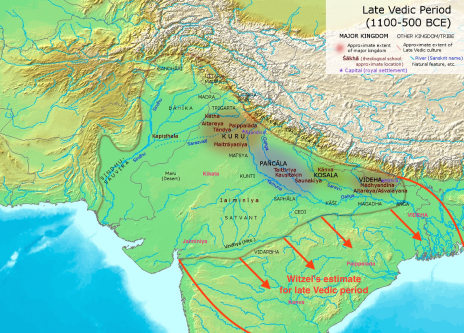
World’s First – University/Medicine School/First Known Cultural Civilization to Mankind.
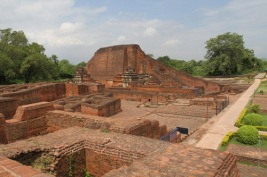
World’s First University – The world’s first university was established in Takshila in 700 BC. More than 10,500 students from all over the world studied more than 60 subjects. The University of Nalanda built in the 4th century was one of the greatest achievements of ancient India in the field of education…Read More on Wikipedia
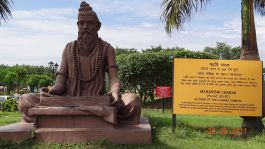
Ayurveda is the earliest school of medicine known to mankind. The Father of Medicine, Charaka, consolidated Ayurveda 2500 years ago…Read More on Wikipedia
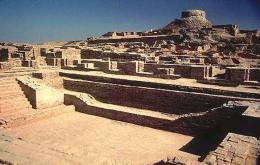
Harappan Culture – When many cultures were only nomadic forest dwellers over 5000 years ago, Indians established Harappan culture in Sindhu Valley (Indus Valley Civilization)...Read More on Wikipedia

Sanskrit is one of the earliest known languages in the world.
India’s Love with Mathematics since the Early Times...
As Einstein said – “We owe a lot to the Indians, who taught us, how to count, without which no worthwhile scientific discovery could have been made”
Concept of Zero – Brahmagupta an Indian Mathematician & also Astronomer, was the first to give rules to compute with zero. The texts composed by Brahmagupta were composed in elliptic verse in Sanskrit, as was common practice in Indian mathematics... Read More on Wikipedia

The rules governing the use of zero appeared for the first time in the Brahmasputha Siddhanta (7th century). This work considers not only zero, but negative numbers, and the algebraic rules for the elementary operations of arithmetic with such numbers...Read More on Wikipedia
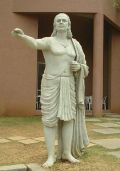
Place Value System – Aryabhata developed the Place Value System. The place-value system, first seen in the 3rd-century Bakhshali Manuscript, was clearly in place in his work…Read More on Wikipedia
Pythagorean Theorem – The value of “pi” was first calculated by the Indian Mathematician Budhayana, and he explained the concept of what is known as the Pythagorean Theorem. He discovered this in the 6th century... Read More at Wikipedia
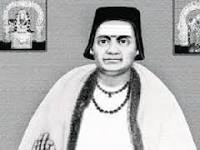
Time Calculation of Earth to Orbit Sun -Bhāskara also known as Bhāskarācārya & as Bhāskara II (1114–1185), was an Indian mathematician and astronomer. Using an astronomical model developed by Brahmagupta in the 7th century, Bhaskara accurately defined many astronomical quantities, including, for example, the length of the sidereal year, the time that is required for the Earth to orbit the Sun, as 365.2588 days. The modern accepted measurement is 365.2563 days, a difference of just 3.5 minutes..Read More at Wikipedia
 Bhāskara’s work on calculus predates Newton and Leibniz by over half a millennium. He is particularly known in the discovery of the principles of differential calculus and its application to astronomical problems and computations. While Newton and Leibniz have been credited with differential and integral calculus, there is strong evidence to suggest that Bhāskara was a pioneer in some of the principles of differential calculus. He was perhaps the first to conceive the differential coefficient and differential calculus.
Bhāskara’s work on calculus predates Newton and Leibniz by over half a millennium. He is particularly known in the discovery of the principles of differential calculus and its application to astronomical problems and computations. While Newton and Leibniz have been credited with differential and integral calculus, there is strong evidence to suggest that Bhāskara was a pioneer in some of the principles of differential calculus. He was perhaps the first to conceive the differential coefficient and differential calculus.
Binary Numbers First Use – The Indian scholar Pingala (2nd Century BC) used binary numbers in the form of short and long syllables (the latter equal in length to two short syllables), a notation similar to Morse code. Pingala used the Sanskrit word śūnya explicitly to refer to zero...Read More at Wikipedia
Algebra, Trigonometry and Calculus are studies, which originated in India.

The Art of Navigation & Navigating was born in the river Sindh over 6000 years ago. The very word Navigation is derived from the Sanskrit word ‘NAVGATIH’. The word navy is also derived from the Sanskrit word ‘Nou’.
India was one of the richest countries till the time of British rule in the early 17th Century.
Now to maintain a Flow of information, LET’S Evaluate – How did India & the Indian Economy under the British Raj took a Set Back !! The intent is to highlight how the Infamous British Raj effected and stagnated the progress during 1850 – 1947.
During the British Raj (1850 – 1947), Indian economy essentially remained stagnant, growing at the same rate (1%) as the population. As reported on Wikipedia
Let’ review some noteworthy points that corroborate as to how the British Raj stagnated the Indian economy and overall India.
The Fall of Rupee
Setting of the Gold Standards during 1870 by nations as – British /Germany / France/ US & other Industrializing countries.
Countries under Imperial Rule & Policies – With countries like India , Japan which were under the Imperial Rule, had no choice but to stay on Silver Standards.
Disparity between the Gold Bases & Silver-Based Economies
For India, which carried out most of its trade with gold-based countries, especially Britain, the impact of this shift was profound. As the price of silver continued to fall, so too did the exchange value of the rupee, when measured against sterling. To Read More…
The absence of Industrialization during the British Raj
Historians have questioned why India did not undergo industrialization in the nineteenth century the way that Britain did.
In the seventeenth century, India was a relatively urbanized and commercialized nation with a buoyant export trade, devoted largely to cotton textiles, but also including silk, spices, and rice.
India was the world’s main producer of cotton textiles and had a substantial export trade to Britain, as well as many other European countries, via the East India Company. Yet as British cotton industry underwent a technological revolution in the late eighteenth century, the Indian industry stagnated, and industrialization in India was delayed until the twentieth century. To Read more …
Railways
British investors built a modern railway system in the late 19th century—it was the fourth largest in the world and was renowned for quality of construction and service. The government was supportive, realizing its value for military use in case of another rebellion, as well as its value for economic growth. All the funding and management came from private British companies. The railways at first were privately owned and operated, and run by British administrators, engineers and skilled craftsmen. At first, only the unskilled workers were Indians. Read More…
Hence to sum it all up, India was practically living under the shadows of British Raj which meant basically no economic reforms from an overall perspective.
So If i haven’t lost you yet :), In a nut shell during the British Raj, most of the Indians were not even thinking of the tag – Land of Snake Charmers!!
INDIA After 1947
It’s only after the Independence that we started reforms meant for India and her people. When we snatched our Independence it was quite evident that we were in shambles and had a long way to go… We had to sort out issues catering to Self Sufficiency for food first so that our people don’t die of hunger. It took us some time but we did it gradually…And then followed other reforms with time.
So Lets Pick up some of the Milestones, that we as Indians have achieved in a span of 66 years post our Independence. (Makes me feel Proud!!!, even to capture in the form of words)
Economy –
The BSE (Bombay Stock Exchange) is the world’s 11th largest stock exchange with an overall market capitalization of $1.7 trillion as of January 23rd, 2015.More than 5500 companies are publicly listed on the BSE… Read More on Wikipedia
Economy -Economists estimated India to have been the most populous and wealthiest region of the world throughout the first millennium CE. Currently, the Indian economy is the world’s seventh-largest by nominal GDP and third-largest by purchasing power parity… All of the credit can be given to the Economic Reforms initiated in 1991, post which India is not one of the fastest growing major economies …Read More on Wikipedia.
Agriculture
India ranks second worldwide in farm output. Agriculture and allied sectors like forestry, logging and fishing accounted for 17% of the GDP and employed 49% of the total workforce in 2014…Read More on Wikipedia
India is the largest producer in the world of milk, jute and pulses, and also has the world’s second largest cattle population with 170 million animals in 2011.
It is the second largest producer of rice, wheat, sugarcane, cotton and groundnuts, as well as the second largest fruit and vegetable producer, accounting for 10.9% and 8.6% of the world fruit and vegetable production respectively…Read More on Wikipedia
Industry
Industry accounts for 26% of GDP and employs 22% of the total workforce.According to the World Bank, India’s industrial manufacturing GDP output in 2015 was 6th largest in the world on current US dollar basis ($559 billion), and 9th largest on inflation adjusted constant 2005 US dollar basis ($197.1 billion)…Read More on Wikipedia
India is one of the world’s largest diamonds and gem polishing and jewellery manufacturing center; it is also one of the two largest consumers of gold…Read More on Wikipedia
Services
India’s services sector has the largest share in the GDP, accounting for 57% in 2012, up from 15% in 1950.It is the 7th largest in the world by nominal GDP, and third largest when purchasing power is taken into account…Read More on Wikipedia
In 2009, seven Indian firms were listed among the top 15 technology outsourcing companies in the world.
Mars Orbit Mission
The Mars Orbiter Mission MOM, also called Mangalyaan was launched on 5 November 2013 by the Indian Space Research Organisation (ISRO).
It is India’s first interplanetary mission making ISRO the fourth space agency to reach Mars, after the Soviet space program, NASA, and the European Space Agency and the first Asian nation to reach Mars orbit, and the first nation to do so on its first attempt... Read More on Wikipedia

India has the second largest pool of Scientist and Engineers in the World.
India is the largest English speaking nation in the world.
India is the only country other than US and Japan, to have built a super computer indigenous.
To end the post I will like to share a good saying by Mark Twain

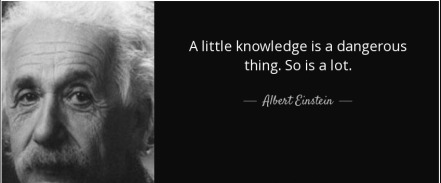
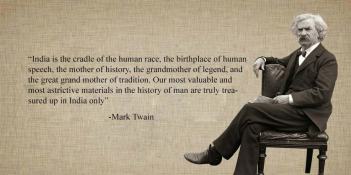
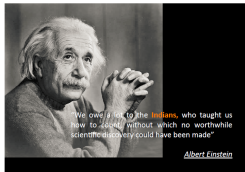
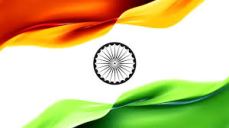
I agree as this name “land of snake charmers” is given to undermine India’s achievement and whoever given this name is an idiot. He has completely ignored all the facts and the real name “golden sparrow”. Even after 800 years of foreign rule, India is standing tall and will thrive in future.
LikeLiked by 1 person
Love this. Maybe I should write something like this about Nigeria. Only if I could get nice quotes about Nigeria from people like Einstein and Mark Twain
LikeLiked by 1 person
I am pretty sure that we have amazing history of Nigeria as well!! good luck and share your blog when you write one.
LikeLike